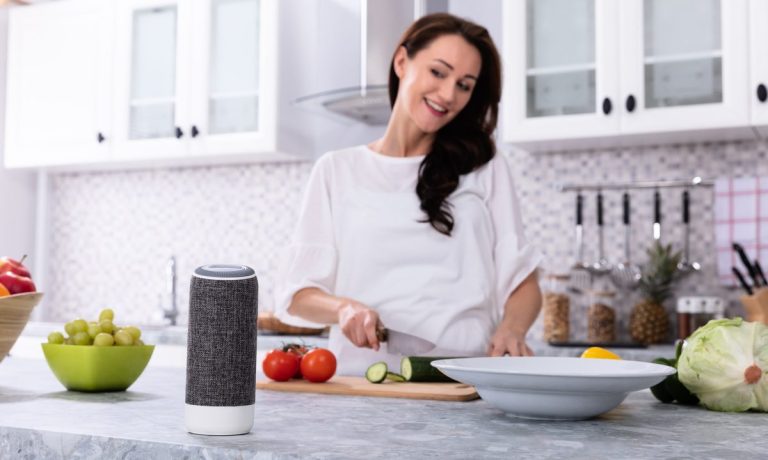Voice Tech Speaks Volumes About Connected Economy Breakthroughs in 2022

Voice was at the heart of commerce long before the Sumerians invented cuneiform, and 5,000 years later, that fact is coming full-circle as consumers of 2022 warm to voice-assisted living, purchasing and payments in their homes, their cars, and eventually, in the wider world.
Estimates of smart speaker market size vary, hovering around $2.8 billion in sales for 2021. As use cases and new applications of voice tech proliferate, however, market watchers see voice taking off, up and to the right on the growth graph, as more capabilities and devices appear.
Starting where it all began — in the home — connected economy living is increasingly programmed for the voice-enabled domiciles of the immediate future. As in, today.
Amazon Alexa, Apple Siri, and Google Nest and smart home players including the Samsung SmartThings Internet of Things (IoT) system have all signed onto the Matter protocol from the Connectivity Standards Alliance (CSA) to harmonize smart speakers from different manufacturers.
It’s not a PR move. Connected economy consumers want simplicity and seamless interoperability from their devices and services. Matter means to help provide it.
See also: Smart Home Tech Makers Push Standardized Connectivity Protocol
Research shows that consumers typically use smart speakers for typical things — dimming the lights, locking the doors, setting the thermometer — and increasingly, they’re making payments.
PYMNTS’ report “The Bring-It-To-Me Economy: How Online Marketplaces And Aggregators Drive Omnichannel Commerce” found that while voice is a sliver of payments now, it’s on a growth course.
Noting that roughly 6% of consumers made voice purchases in the prior year, PYMNTS found “89% of consumers who use their voice assistants to shop and pay also report buying at least one type of product online more now than they did last year, compared to 52% of non-users.”
As Karen Webster wrote in the third quarter of 2021, “Over the last several years, PYMNTS research has tracked a growing number of consumers using voice-activated devices to buy things. The introduction of devices with screens has helped boost those numbers, along with the availability of skills on the Alexa app on iPhones and Android phones enabling users to say and pay.”
Read also: Voice Operating Systems Like Alexa Will Power the Connected Economy
Some of the cleverest use cases for voice commerce can be found rolling down America’s streets and highways as cars and trucks are jumping enthusiastically into voice-controlled connected autos that pay for gas before you reach the pump — and order you a coffee too.
A recent example of this is Toyota Motor North American (TMNA) deploying the Cerence “Browse” cloud-based service in-car multimedia system in Toyota and Lexus vehicles.
As PYMNTS reported, “Cerence Browse converts verbal questions to a web search, gets answers from external online information sources, selects the best one and provides a voice response. Drivers can keep their eyes on the road and do not have to use an external device.”
See more: Voice Assistants Give Drivers Information on the Go